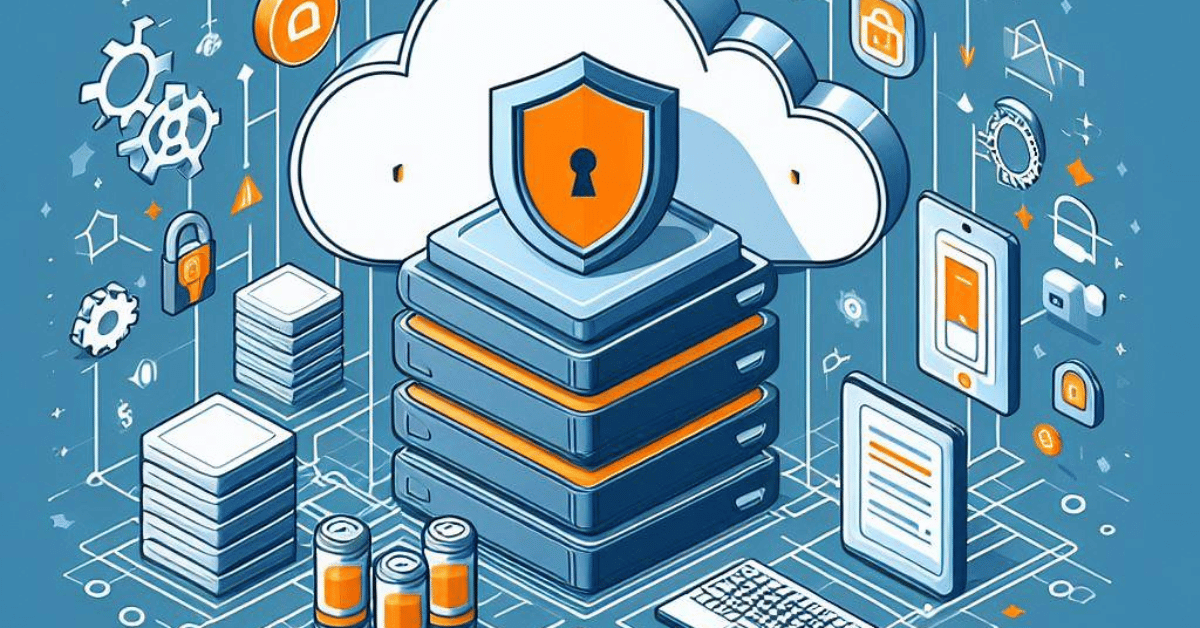Overview of Data Encryption at Rest on AWS
Data Encryption at Rest is a security feature provided by Amazon Web Services (AWS) that helps protect data stored in various AWS services. It ensures that data is encrypted and inaccessible to unauthorized users, both within the AWS infrastructure and in the event of physical theft.
Data Security on AWS

AWS provides strong data security measures to ensure that data is encrypted and inaccessible to unauthorized users. This includes encryption both within the AWS infrastructure and in the event of physical theft.
AWS Shared Responsibility Model
The AWS Shared Responsibility Model is a framework that outlines the division of security responsibilities between AWS and its customers. AWS is responsible for the security of the cloud infrastructure, while customers are responsible for the security of their data and applications running on AWS.
Data Security Measures on AWS
AWS provides a range of data security measures to ensure the protection of customer data. These measures include:
1. Encryption: AWS supports encryption at rest and in transit. Customers can encrypt their data using AWS Key Management Service (KMS) or their encryption keys.
2. Network Security: AWS offers Virtual Private Cloud (VPC) to isolate customer resources and provides network security features such as security groups and network access control lists (ACLs).
Encrypting Data at Rest on AWS
AWS provides various data security measures to protect customer data, including:
1. Encryption: AWS supports encryption both at rest and in transit. Customers can choose to encrypt their data using AWS Key Management Service (KMS) or their encryption keys.
2. Network Security: AWS offers Virtual Private Cloud (VPC) to isolate customer resources and provides network security features like security groups and network access control lists (ACLs).
These measures help ensure the security and protection of customer data on AWS.
Data Classification and Risk Assessment
Data classification and risk assessment are essential components of ensuring the security of customer data on AWS. By classifying data based on its sensitivity and criticality, organizations can implement appropriate security controls and safeguards. This includes identifying and assessing potential risks associated with the storage, processing, and transmission of data on AWS.
Choosing the Right Encryption Approach
When it comes to protecting customer data on AWS, choosing the right encryption approach is crucial. Encryption helps to ensure that data remains confidential and secure, even if it is intercepted or accessed by unauthorized individuals. There are different encryption options available on AWS, including server-side encryption, client-side encryption, and transit encryption. Organizations should carefully consider their specific requirements and choose the encryption approach that best meets their needs for data protection on AWS.
Step-by-Step Guide to Encrypting Data at Rest
Here is a step-by-step guide to encrypting data at rest on AWS:
1. Identify the data that needs to be encrypted: Determine which data needs to be protected and prioritize it based on sensitivity and regulatory requirements.
2. Understand encryption options: Familiarize yourself with the different encryption options available on AWS, including server-side encryption, client-side encryption, and transit encryption. Each option has its benefits and considerations.
Monitoring and Auditing
AWS CloudTrail for Data Security

AWS CloudTrail is a service that can be used for monitoring and auditing data security on AWS. It provides a detailed history of AWS API calls made within an AWS account, including information such as the identity of the caller, the time of the call, and the parameters used. This can be useful for tracking and investigating any unauthorized or suspicious activity. By enabling CloudTrail, you can gain visibility into your AWS environment and monitor actions taken by both users and services.
Amazon CloudWatch Logs
Amazon CloudWatch Logs is a service provided by AWS that allows you to monitor and manage logs generated by your AWS resources and applications. With CloudWatch Logs, you can collect, view, and analyze log data in real time, making it easier to troubleshoot issues, track system behaviour, and gain operational insights. It integrates seamlessly with other AWS services, including CloudTrail, allowing you to centralize and analyze logs from multiple sources in one place.
SIEM Integration for Enhanced Security
CloudWatch Logs also offers integration with Security Information and Event Management (SIEM) tools, enhancing the security of your AWS environment. By integrating CloudWatch Logs with your SIEM solution, you can consolidate and analyze log data from various sources, including your AWS resources and applications, alongside other security events and incidents. This integration allows you to have a comprehensive view of your security posture, enabling you to detect and respond to security threats more effectively.
Data Recovery and Disaster Management
Data Recovery and Disaster Management are crucial aspects of ensuring the resilience and continuity of your business operations. AWS provides several services and features to help you protect and recover your data in the event of a disaster. One such service is Amazon S3 (Simple Storage Service), which offers highly durable and scalable object storage. By storing your data in S3, you can benefit from its built-in redundancy and data replication across multiple availability zones, ensuring that your data remains safe even if one zone experiences an outage.
Frequently Asked Questions (FAQs)
What is data encryption at rest?
Data encryption at rest refers to the practice of encrypting data while it is stored in a storage system or database. This ensures that even if unauthorized individuals gain access to the physical storage media, they will not be able to read or use the data without the encryption key. Encryption at rest is an important security measure that helps protect sensitive information from being compromised.
What are the encryption options for Amazon S3?
Amazon S3 offers several encryption options to secure data at rest:
1. Server-Side Encryption with Amazon S3 Managed Keys (SSE-S3): Amazon S3 automatically encrypts your data using AES-256 encryption and manages the encryption keys for you.
2. Server-Side Encryption with AWS Key Management Service (SSE-KMS): Amazon S3 uses AWS Key Management Service (KMS) to encrypt your data. With SSE-KMS, you have more control over the encryption keys.
How can I manage encryption keys on AWS?
To manage encryption keys on AWS, you can use the following services and features:
1. AWS Key Management Service (KMS): AWS KMS is a managed service that allows you to create and control encryption keys. You can use AWS KMS to generate, rotate, and manage encryption keys used by various AWS services, including Amazon S3.
2. AWS Key Management Service (KMS) Customer Master Keys (CMKs): CMKs are the primary resources in AWS KMS.
What are the best practices for data recovery and disaster management on AWS?
Here are some best practices for data recovery and disaster management on AWS:
1. Regularly back up your data: Implement a backup strategy to ensure that your data is regularly backed up. AWS offers several backup services like Amazon S3, Amazon EBS snapshots, and AWS Backup that you can use to create and manage backups.
2. Test your backups: It’s important to regularly test your backups to ensure that they are valid and can be restored when needed.
Conclusion
In conclusion, AWS offers various services and features to ensure the resilience and continuity of your business operations. One of these services is Amazon S3, which provides highly durable and scalable object storage. By utilizing S3’s built-in redundancy and data replication across multiple availability zones, your data can be protected and recovered in the event of a disaster.
